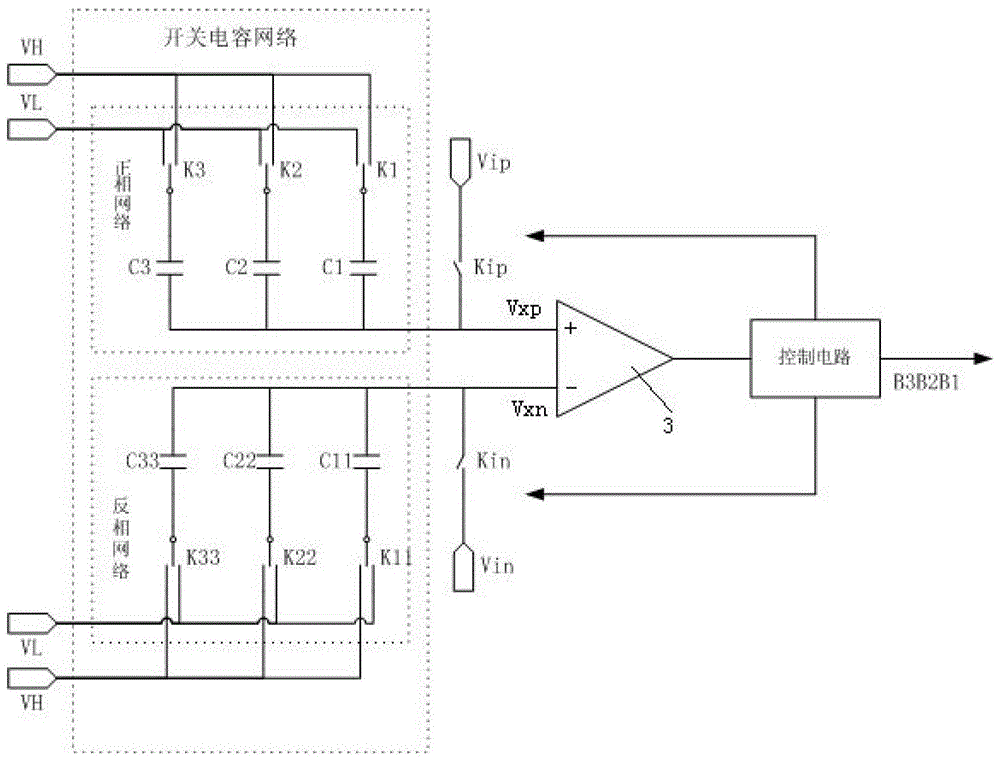A Differential Input Successive Approximation Analog-to-Digital Conversion Method
A successive approximation, analog-to-digital conversion technology, applied in the direction of analog/digital conversion, code conversion, signal transmission system, etc., can solve the problems of reduced power consumption of analog circuits, low economic benefits, and high power consumption of charging and discharging. Achieve the effects of reducing charge and discharge current, reducing chip area, and improving economic benefits
- Summary
- Abstract
- Description
- Claims
- Application Information
AI Technical Summary
Problems solved by technology
Method used
Image
Examples
Embodiment Construction
[0016] Below in conjunction with accompanying drawing and specific embodiment, further illustrate the present invention, should be understood that these embodiments are only for illustrating the present invention and are not intended to limit the scope of the present invention, after having read the present invention, those skilled in the art will understand various aspects of the present invention Modifications in equivalent forms all fall within the scope defined by the appended claims of this application.
[0017] Such as figure 1 As shown, a differential input successive approximation analog-to-digital converter with three outputs includes a control circuit, a comparator, and a switched capacitor network. The switched capacitor network includes a non-inverting network connected to the non-inverting input of the comparator, and an inverting network connected to the negative input of the comparator. In the non-inverting network, there are the same number of capacitors as th...
PUM
 Login to View More
Login to View More Abstract
Description
Claims
Application Information
 Login to View More
Login to View More - R&D
- Intellectual Property
- Life Sciences
- Materials
- Tech Scout
- Unparalleled Data Quality
- Higher Quality Content
- 60% Fewer Hallucinations
Browse by: Latest US Patents, China's latest patents, Technical Efficacy Thesaurus, Application Domain, Technology Topic, Popular Technical Reports.
© 2025 PatSnap. All rights reserved.Legal|Privacy policy|Modern Slavery Act Transparency Statement|Sitemap|About US| Contact US: help@patsnap.com



